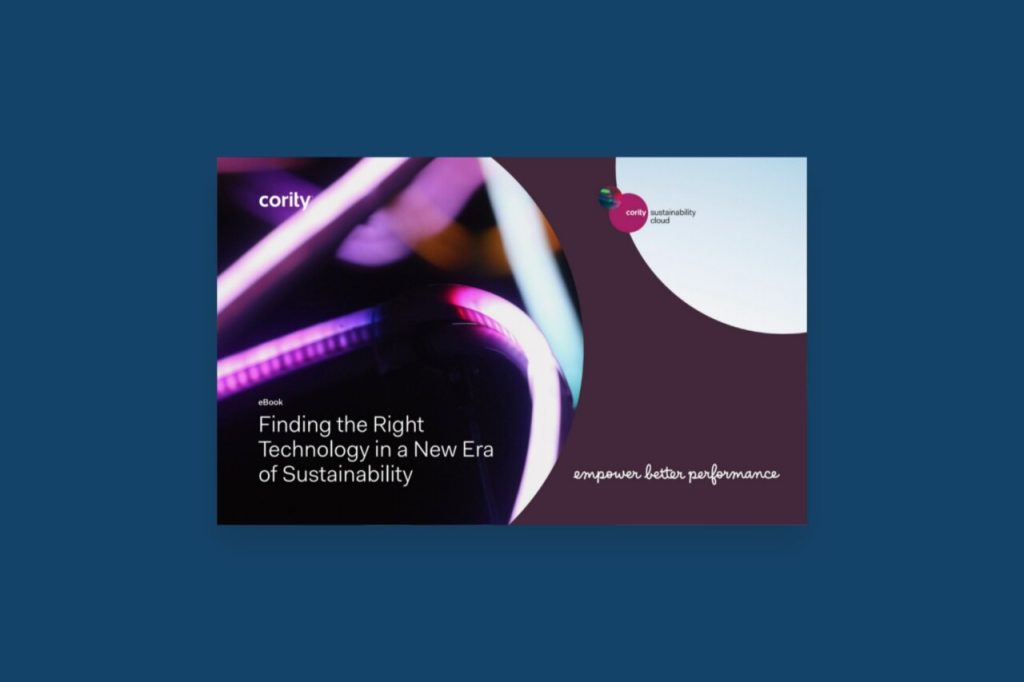Corporate carbon footprinting – especially for scope 3 emissions – is becoming an important responsibility for companies. The aim is to record, measure and understand their own climate impact in order to make an effective contribution to climate protection. Read on for insights into the practice of carbon accounting.
The call for ambitious climate protection is getting louder
An agitated civil society, led by the young climate activist Greta Thunberg, has increased the pressure on politicians and businesses to take bold action against climate change. The Paris Climate Agreement of 2015 manifested the commitment of the global community to limit global warming to below 2 degrees Celsius, and even to no more than 1.5 degrees. The recent COP-26 climate conference in Glasgow has again shown us that achieving this goal will not be a simple undertaking. And yet, we have now entered the decade of implementation. After all, we have enough data and facts; now we need more action.

Additionally, the financial market is becoming increasingly concerned with the climate impact of industries and is raising the pressure – especially through the EU taxonomy. The EU taxonomy is a classification system to clearly define sustainable investments and respective economic activities that contribute to the European initiative of the Green Deal to lead Europe into a sustainable future. This classification will provide guidance to financial actors in the future to make it easier to channel capital into demonstrably sustainable investments. So far, criteria have been developed for “Mitigate climate change” and “Adaptation to climate change”.
The corporate response is increasingly bold and data-driven

Before companies can set ambitious climate protection targets – such as science-based targets or climate neutrality targets – to answer the call to action, the first step is to identify and assess the corporate carbon footprint (CCF), the so-called CO2 or climate balance. Scope 1, 2 and 3 climate data (according to the Greenhouse Gas Protocol) are used to measure how much CO2 a company emits directly and indirectly along its value chain. In practice, measuring the indirect Scope 3 climate data poses particular challenges for companies.
The Greenhouse Gas Protocol (short: GHG protocol) is the primary standard to provide guidance and structure along Scope 1, 2 and 3 emissions in the corporate carbon accounting process:
• Scope 1: includes the direct release of climate-damaging emissions within the company
• Scope 2: includes the indirect release of climate-damaging emissions by energy suppliers.
• Scope 3: includes the indirect release of climate-damaging emissions in the upstream and downstream supply chain.
As with the development of a sustainability strategy, when establishing a carbon footprint – especially for Scope 3 climate data – it is important to collect and calculate data along the most relevant categories. As a number of companies from different sectors and industries have already embarked on this journey, their materiality assessment of their Scope 3 climate data can provide valuable guidance. As demanded by the financial market, climate risk assessment along the value chain is also playing an increasingly important role.
In recent years, the Carbon Disclosure Project (short: CDP) has established itself as one of the most influential sustainability rating systems, enabling companies, investors, cities, states and regions to report on their environmental impacts. As a result, GHG emissions disclosure has increasingly become a standard process over the past ten years.
Scope 3 data: an undertaking with challenges

The main challenge in collecting especially scope 3 climate data is the prevailing lack of climate-relevant data. From this main challenge, corresponding subchallenges can be derived:
- Complexity and lack of capacity: the GHG Protocol shows the depth of content and data that a carbon footprint requires. Especially for scope 3, there are various categories as well as calculation and approximation methods in the upstream and downstream value chain. Therefore, there is often a lack of capacity in companies in regard to those who take on this laborious task.
- Lack of transparency and limited influence: Especially for scope 3 climate data, relevant data sources are not always collected within the organization itself, but come from suppliers, service providers or customers. Therefore, good and trusting relationships in the value chain are needed to create the willingness to collect relevant data and make it transparent.
According to the sustainability experts at Sustainalize, depending on the degree of complexity of the company and the value chain, there are different approaches to obtaining reliable climate data for accounting purposes:
- Expenditure-based method: Sales multiplied by the average emission factors per monetary unit
- Average data method: product quantity in kg multiplied by the industry’s average emission factors per kg
- Hybrid method: a combination of supplier-specific activity data and industry average data
- Supplier-specific method: inventory data at product level (cradle-to-gate) from goods or service suppliers
The most precise method is the supplier-specific method. The more concrete and valid the data is, the more reliable it is for deriving effective reduction measures.
Practical implications

In theory, frameworks and standards as well as initial best practices orient companies to the best methods for gathering and reporting on Scope 3 emissions. However, in practice, there are still some open questions. Therefore, let’s look at some of the most frequently asked questions:
What standard should I apply to create a Corporate Carbon Footprint?
The GHG protocol is more or less the bible for creating a climate footprint. Here, all relevant categories along the scopes are defined and described. In addition, frameworks such as CDP, GRI, SASB and the future EFRAG reporting standard are certainly helpful, although these only address climate protection as one part of an holistic sustainability reporting.
What relevance do scope 3 climate data have for companies that want to set science-based targets?
The Science Based Targets Initiative (short: SBTi) developed a framework several years ago for companies to set ambitious climate targets that are compatible with a 1.5 degree world. These targets are then considered science-based, as they have been calculated on the basis of the latest scientific findings for global warming. The process is as follows: In the first step, companies apply to the SBTi that they want to set Science Based Targets (SBTs). Then they have 2 years to calculate a carbon footprint, based on which the SBTs are calculated. If the result is that more than 40% of the documented CO2 footprint is in scope 3, then companies must also set an SBT for this scope. However, it is sufficient if 80% of the scope 3 data can be reliably determined.
Where should you start when collecting climate data?
The most important first step is: simply start. Start with scope 1 and scope 2 data and concentrate in scope 3 on the categories that are easier to collect or where you can make good assumptions for estimated values. A good example is often business travel, as there is already tracked data due to the travel cost accounting. This can be used for the calculation of the footprint. Later on, new categories can be added step by step and the data quality of existing categories can be improved.
Where can I find the relevant emission factors for calculating the footprint?
This is indeed no simple undertaking. There are many diverse sources, including those that are free or chargeable. It depends mainly on the provider whether they offer regional or country-specific emission factors for calculating the CO2 footprint. Of course, you can also use your own factors from the respective industry associations or, for example, from international energy agencies. Well-known sources are DEFRA (free of charge) or EcoInvent (with costs).
How to deal with partial data?
Of course, this partial data is difficult to compare. Therefore, the GHG protocol provides guidance for each individual category in scope 3 regarding how to best approach data collection and calculation. Basically, one should document consistently and transparently what has been included in the CO2 footprint, what has not and in which quality. Therefore, documenting and making it comprehensible plays an important role.
What should be considered when including suppliers in data collection?
At the heart of the matter is the established relationship with suppliers and how they have already been engaged in sustainability issues. Of course, joint data collection can also be contractually regulated in the future. However, it makes sense, especially at the beginning, to simply concentrate on the top 5 to 10 suppliers and start the dialogue on this joint learning journey. But the more companies will demand this data from their suppliers, the more likely it will be provided, as it becomes an important factor for business attractiveness.
Resilient climate data through software
The more the topic of climate protection and climate footprinting becomes professionalized and incorporated into the operational plans of a company, the more important it is to use reliable tools in order to cope with the complexity. Compared to excel sheets, professional software solutions can significantly increase data quality through automatic input validation and plausibility checks. In addition, a central input system ensures that calculation consistency and clear workflows and approval processes are guaranteed. For instance, Cority’s Sustainability Cloud with its integrated CO2 management is customizable for the individual requirements of companies and enables the inclusion of suppliers through standardized questionnaires.
Learn More

To learn more about how a SaaS software solution can benefit your goals, some of the key features to consider when selecting a vendor, and why data matters so much to companies that are innovating sustainability, check out the eBook, Finding the right technology in a new era of sustainability.












